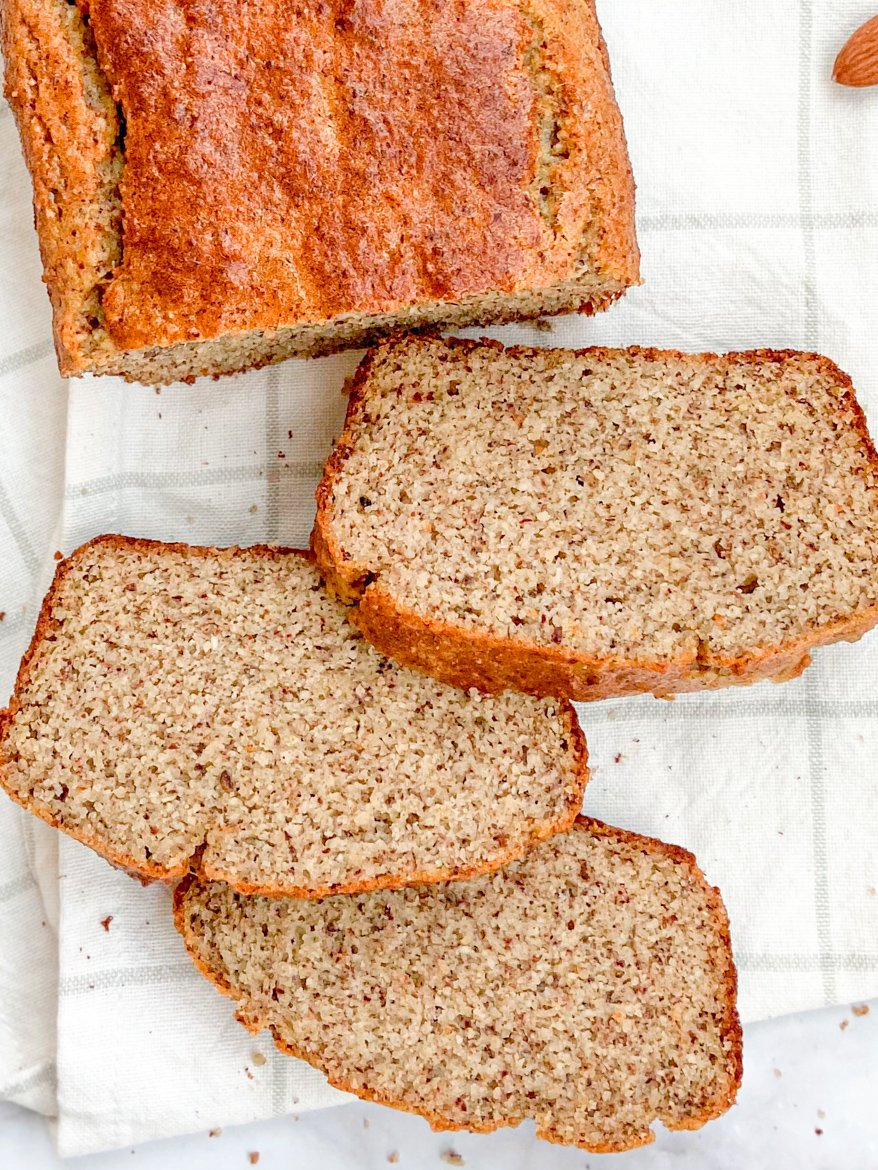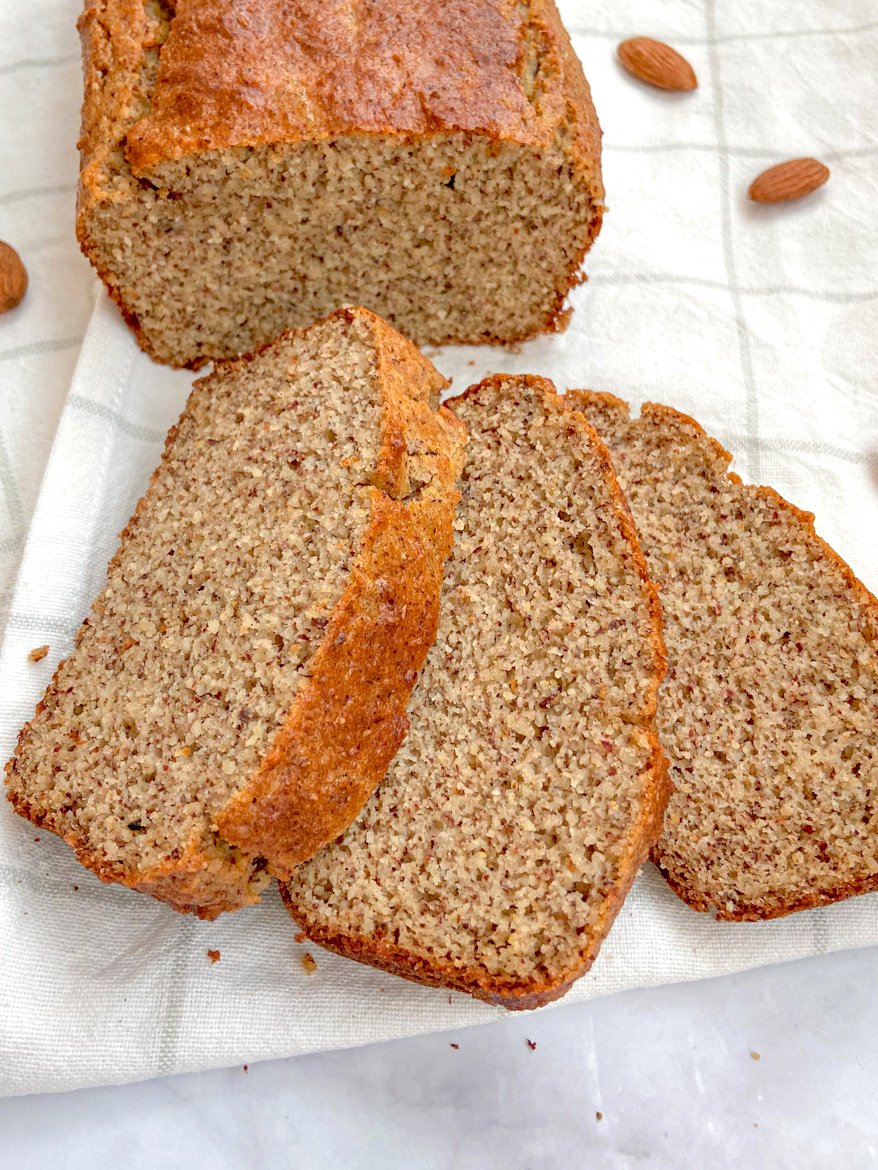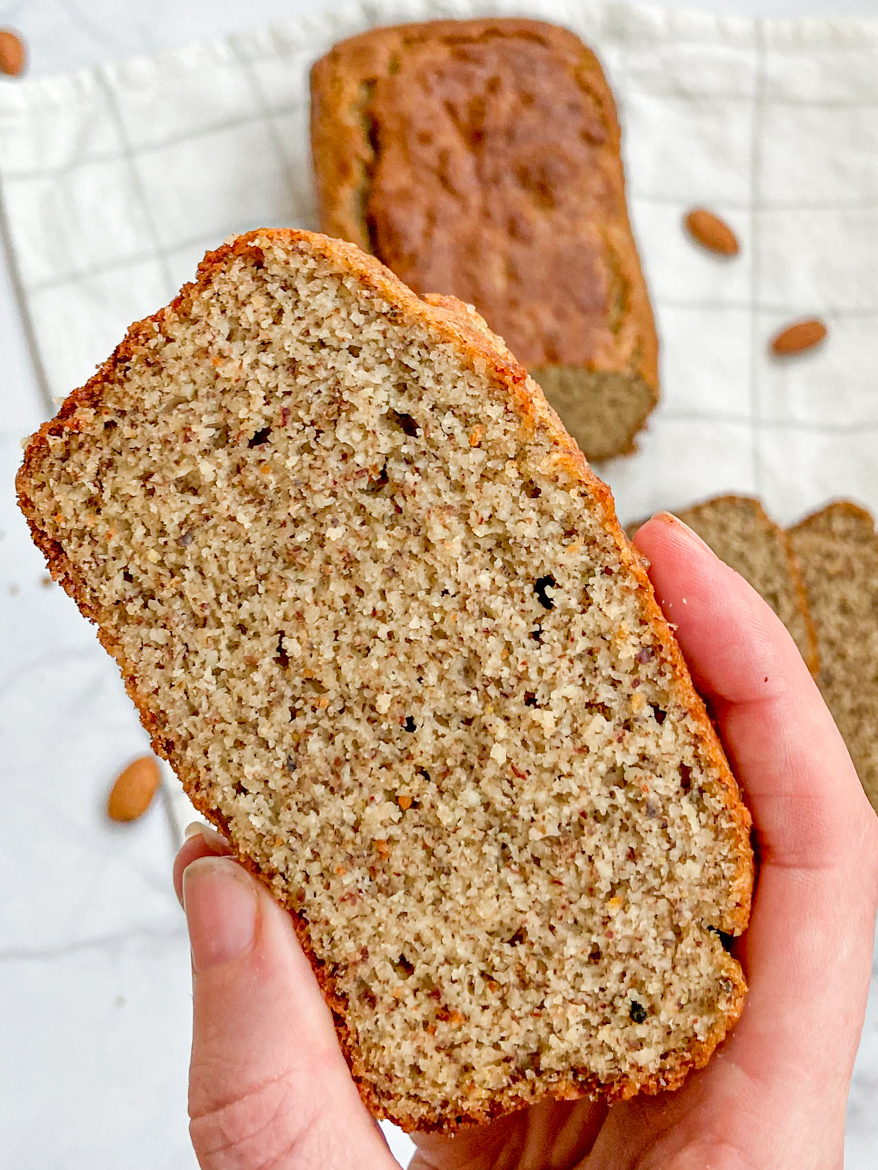This recipe for Almond Flour Bread is undoubtedly the best option for anyone looking for a healthy and low-carb bread. It has a taste that is quite similar to traditional sandwich bread and you can have it ready in less than 45 minutes. Additionally, this recipe is naturally gluten-free. However, you can easily make it Paleo, Keto, and Whole30 approved with a few simple modifications.

For those with dietary restrictions, gluten-free options have become an essential part of the culinary landscape. Whether it’s due to gluten sensitivity or a conscious choice for a healthier lifestyle, the demand for gluten-free alternatives is on the rise. Among these options, almond flour bread stands out as a favorite. It’s not only a tasty replacement but also packs a punch when it comes to nutrition.
Table of Contents
INGREDIENTS FOR LOW-CARB ALMOND FLOUR BREAD
Let’s take a look at the essential ingredients you’ll need for making gluten-free almond flour bread:
- Almond Flour: The star of the show. Almond flour is finely ground almonds that impart a delightful nutty flavor and a moist, tender texture to the bread. It’s naturally gluten-free and packed with nutrients.
- Olive Oil: A healthy source of fat that adds moisture and a rich, savory note to the bread. I used extra virgin olive oil, but any mild-tasting oil like grapeseed oil or avocado oil will work.
- Eggs: Eggs provide structure and moisture to the bread. They also contribute to the bread’s protein content.
- Egg Whites: Adding egg whites can help create a lighter, fluffier texture, balancing the richness of the yolks.
- Flax Seeds: Ground flax seeds are often used in gluten-free baking as a binding agent. They are a great source of fiber and healthy fats.
- Baking Powder and Baking Soda: These leavening agents help the bread rise and give it a soft, airy texture.
- Apple Cider Vinegar: A touch of acidity from apple cider vinegar enhances the rising action and adds a subtle tangy flavor.
- Honey (optional): A natural sweetener that complements the nuttiness of almond flour. Honey also adds moisture and helps with browning. You can use other liquid sweeteners, like maple syrup, molasses, or agave. If you omit the sweetener, the bread will be lighter in color.
- Fine Sea Salt: Fine sea salt dissolves easily into the batter. But, if you don’t have fine sea salt on hand, you can also use the same amount of regular salt.
Now that you have your ingredients ready, let’s move on to the baking process, which involves mixing these components to create a delightful gluten-free almond flour bread.

BAKING INSTRUCTIONS
- Preheat Your Oven: Start by preheating your oven to 350°F (175°C). Ensure your oven is thoroughly heated to promote even baking.
- Mix Dry Ingredients: In a mixing bowl, combine almond flour, baking powder, baking soda, salt, and ground flax seeds. Mix these dry ingredients until they are well incorporated.
- Mix Wet Ingredients: In another bowl, whisk together the eggs, egg whites, olive oil, honey, and apple cider vinegar. This wet mixture should be well combined.
- Combine Dry and Wet Ingredients: Slowly add the wet ingredients to the dry mixture. Stir until you achieve a smooth, homogeneous batter.
- Grease and Prepare the Pan: Grease a bread pan or line it with parchment paper to prevent sticking. Pour the batter into the pan, leveling it out evenly.
- Baking: Place the pan in the preheated oven and bake for 30-35 minutes or until the bread turns golden brown and a toothpick inserted into the center comes out clean.
- Cooling: Once the bread is done, remove it from the oven and allow it to cool in the pan for about 10 minutes. Then, transfer it to a wire rack to cool completely before slicing.




TIPS FOR BAKING THE PERFECT ALMOND FLOUR BREAD
- Don’t Skip the Baking Powder and Baking Soda: These leavening agents are crucial for achieving the desired texture in your almond flour bread.
- Use Almond Flour: Opt for blanched almond flour for a lighter, more neutral flavor. Almond meal, which includes the skins, can make the bread denser and impart a more pronounced nutty flavor.
- Mix the wet Ingredients Well: Mixing the wet ingredients well until emulsified is important, as it helps the almond flour bread bake to the right texture. When the wet ingredients become a smooth, slightly thickened mixture, you’ll know it’s ready!
- Be Patient with Cooling: Let the bread cool completely before slicing. Almond flour bread can be delicate when hot but firms up nicely as it cools.
- Storage: Keep your almond flour bread fresh by storing it in an airtight container or wrapping it in plastic wrap. It can be stored at room temperature for a day or two, but for longer storage, refrigerate it. You can also freeze slices for future use.
- Dietary Needs: To make this almond flour bread Paleo, Keto, and Whole30 approved just omit the liquid sweetener and use a grain-free baking powder. However, the difference in flavor will be minimal and you will still have healthy, low-carb, sugar-free bread to serve with any meal.
Now that you’ve mastered the art of baking gluten-free almond flour bread, let’s explore the myriad health benefits this delicious bread brings to the table.

HEALTHY BENEFITS OF LOW-CARB ALMOND FLOUR BREAD
- Gluten-Free: The most apparent benefit of almond flour bread is its gluten-free nature. This makes it an excellent choice for those with gluten sensitivities or celiac disease, providing an alternative to traditional wheat-based bread.
- High in Healthy Fats: Almond flour is rich in heart-healthy monounsaturated fats, which can help lower bad cholesterol levels and reduce the risk of heart disease.
- Low in Carbohydrates: If you’re watching your carb intake, almond flour bread is an ideal choice. It’s lower in carbohydrates compared to traditional bread, which can be advantageous for managing blood sugar levels.
- Good Source of Protein: Almonds are naturally protein-rich, and almond flour retains this protein content. This bread can help you meet your daily protein needs.
- Dietary Fiber: Almond flour contains dietary fiber, which is essential for digestive health and can aid in maintaining a feeling of fullness.
- Vitamins and Minerals: Almonds are a good source of essential nutrients like vitamin E, magnesium, and calcium. Vitamin E is an antioxidant that can protect cells from damage, while magnesium is crucial for various bodily functions, including muscle and nerve function.
- Weight Management: The combination of healthy fats, protein, and dietary fiber can help with weight management. It promotes satiety and can reduce overeating.
- Gluten-Free Lifestyle: For individuals with gluten sensitivities or celiac disease, almond flour bread opens up a world of culinary possibilities, allowing them to enjoy bread without the digestive discomfort that gluten can cause.

A TASTY AND NUTRITIOUS CHOICE
Gluten-free almond flour bread is not just a dietary substitute; it’s a delicious and nutritious option for all bread lovers. With its rich, nutty flavor and array of health benefits, it’s a versatile choice for a wide range of diets. By mastering the art of baking this wholesome bread and understanding its health benefits, you can enjoy a tasty, gluten-free alternative that satisfies your cravings while nourishing your body. So, why not embark on a gluten-free culinary adventure and savor the wholesome delight of low-carb almond flour bread?


Low-Carb Almond Flour Bread
Equipment
- Bread pan 20x10cm 9in 20x10cm
- Medium bowl
- Large bowl
- Spatula
- Fue
- Kitchen Scale or Measuring Cups and Spoons
Ingredients
Wet Ingredients:
- 5 tbsp of olive oil
- 2 large eggs, room temperature
- 3 large egg whites, room temperature
- 1 tbsp apple cider vinegar
- 1 tbsp honey
Dry Ingredients:
- 2 cups (226 g/8 oz) almond flour, blanched
- ¼ cup (28 g/1 oz) cup flaxseed, freshly ground
- ¾ tsp baking soda
- 1 tsp baking powder
- ½ tsp fine sea salt
Instructions
- Preheat the oven to 350℉/175°C.
- In a mixing bowl, combine almond flour, baking powder, baking soda, salt, and ground flaxseeds. Mix these dry ingredients until they are well incorporated.
- In another bowl, whisk together the eggs, egg whites, olive oil, honey, and apple cider vinegar. This wet mixture should be well combined.
- Slowly add the wet ingredients to the dry mixture. Stir until you achieve a smooth, homogeneous batter.
- Grease a bread pan or line it with parchment paper to prevent sticking. Pour the batter into the pan, leveling it out evenly.
- Place the pan in the preheated oven and bake for 30-35 minutes or until the bread turns golden brown and a toothpick inserted into the center comes out clean
- Once the bread is done, remove it from the oven and allow it to cool in the pan for about 10 minutes. Then, transfer it to a wire rack to cool completely before slicing.
